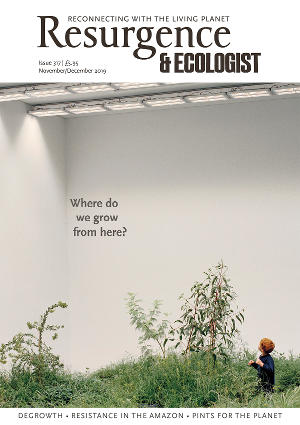Surfacing is Kathleen Jamie’s new essay collection, her first since Sightlines (2012), and is a riveting, multi-layered exploration of how we locate ourselves in time. The book hinges on two long pieces, one set in northern Scotland, the other in western Alaska. In both, erosion, a result of recent changes in the climate – “the land is losing its grip on itself” – is exposing the remains of long forgotten habitations: in Alaska, a Yup'ik village 500 years old, and in the Orkney islands, a Neolithic settlement dating back 5,000 years. Jamie joins archaeological digs as they sift through the soil, bringing the past to the surface, into the present.
In Alaska the found objects – “a line-weight shaped like a seal, or a pendant carved of mammoth ivory, or a piece of basket made of woven grass” – remain culturally close enough to local people to prompt dim memories in the eldest of the elders. They turn the artefacts in their hands, name them once again. They are a tangible link to a past stolen by colonisers, and the Yup'ik anchor to them: their carvers study the old techniques, and the young learn dances to accompany the masks they are remaking. A culture assumed to be centuries distant was just six feet under all the time, and a way of life rises once more to the surface.
We feel regret for these people scarcely clinging to their heritage, but then Jamie turns her eye upon ourselves and a culture yet more adrift. Scotland was not so different from Alaska, once – reindeer antlers and bear skulls are found in highland caves – yet the objects pulled from the earth in Orkney are so remote as to be almost meaningless: a kind of stone chest, found empty; a small piece of carved sandstone, Britain’s earliest depiction of a human. What were they for? What were they called? We are so colonised, have wandered so far from our roots, that now only a qualified few can begin to make the dimmest of guesses as to their purpose. It is a destabilising realisation of how little we know, how much we have lost.
It is Jamie’s acute observation that makes her writing so vivid, yet she is enthralled by the vision of others. In the Arctic she walks out on the tundra to try and see as those who live there see. “The grasses were so vibrant I could almost taste them. This, after only an hour of attention. What would a year be like, a lifetime?”
The book situates us, in its opening paragraph, in the early Anthropocene. The archaeologists working the Yup'ik village remark on the town’s rubbish dump, and how future colleagues will be disinterring refrigerators and snowmobiles. Will the elders know them? As the other essays accumulate strata and the book progresses, the past and future become concrete components of the present. The essays that concern Jamie’s personal life, too, straddle different times: her father dies; her children leave home. The bond is memory, held in objects and held in minds, and it is memory that guards the flame of connection from one generation to the next.
In the end, is this not the job of the storyteller? To bring our past to the surface, to revitalise our present, to guide our future? And if it is, then Jamie, herself a baby-elder now (as I once heard the term in Alaska), is guarding the flame magnificently.







